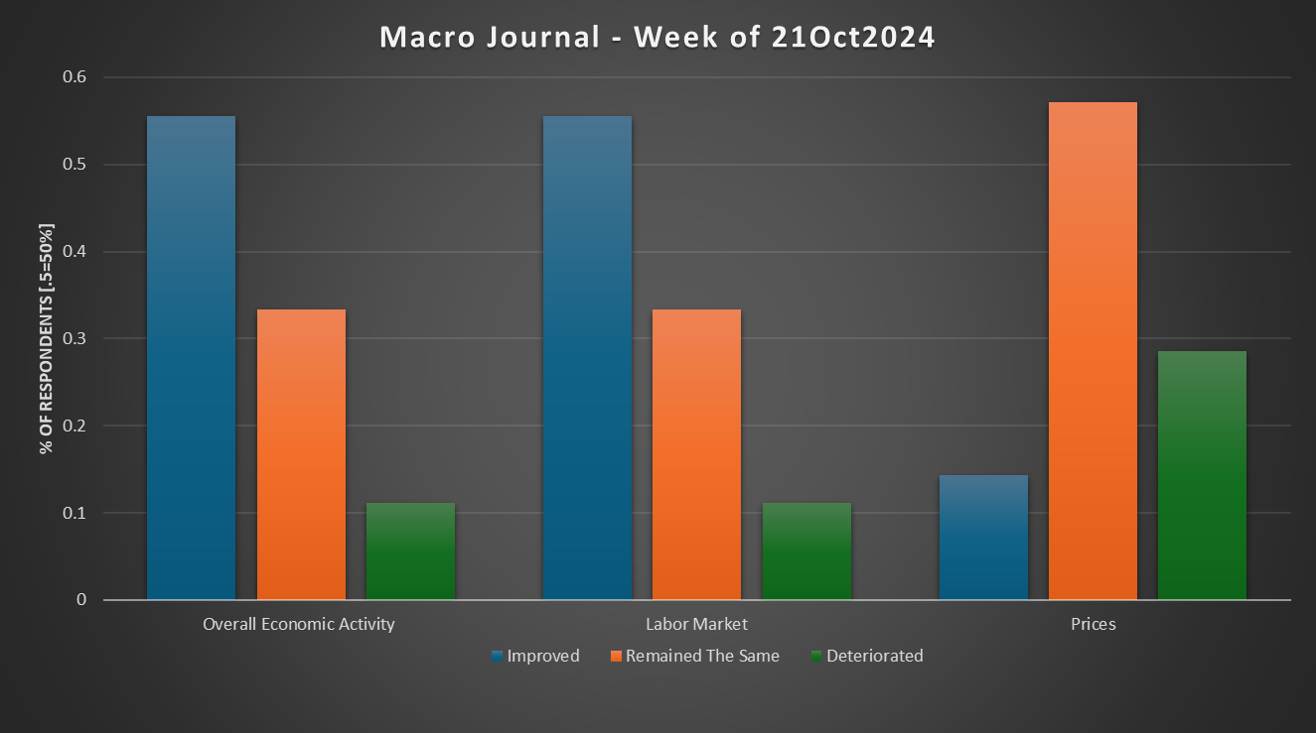Macro Journal
What is it?
- A simple tool for tracking the economy
- Description of the Macro Journal

How it works
- Read the news
- At the start of each week, compile your thoughts by answering 3 questions
- Did Overall Economic Activity improve this week?
- Did Prices improve this week?
- Did Jobs improve this week?
- Log your thoughts using this form
- Form opens Tuesdays at 9:05AM EST and closes the following Tuesday 9:00AM EST
- Repeat weekly
What it’s not
- The MJ is not a trading strategy
- The MJ doesn’t provide a granular view of activity; e.g. by sector or leading/lagging status
Who is this for?
- Any students just beginning to watch the economy
- Analysts (policy, business, markets) that need to form their own “big picture” perspective on the economy, but don’t need the nuance of a professional macroeconomist
Resources & Tips
Academic Article
Check out this article describing the pedagogical merits
Economic Calendars
- Great resource for keeping up to date with macro activity. Several (free) versions are available. I enjoy the calendar from Trading Economics
- Here is a quick tutorial on the anatomy of these calendars
How I track the data
Sitting down once a week and reading all of the macro-related news during the past 7 days is not feasible. Reading the news throughout the week is more feasible, but if you don’t have a record keeping system, your reactions to a news item aren’t captured. Every professional has their own organizational system. Let me describe how I track the macroeconomy on a weekly basis in the hopes that it sparks some ideas for how you set up your infrastructure.
- Keep a macro notebook. I use MSFT OneNote. Macro Notebook -> Section by Date -> Pages by topic. This allows me to record any news item in no more than 3 steps (ala David Allen Getting Things Done).
- For the macro journal I suggest topic pages for each question Output, Labor, Prices. You can extend to your purpose and passion. I also have Fed, Fiscal, Equities, Fixed Income, etc..
- When you see an article throughout the week do one of the following
- Read it, summarize it, and file it in the notebook
- Screenshot/clip it and file in notebook
- Mark the email/post, etc..as unread and redirect to your To Read pile
- File the articles chronologically as you’ve read them. 1) the cadence of data is important for financial markets, 2) helps to trigger your memories.
- Once a week
- Go through the econ calendar, evaluating each major data release
- Go through your To Read pile, summarizing and filing in your notebook
- Go to the overall economic activity page in your notebook. Skim through the article summaries and provide a rating. Provide a justification now. Don’t wait until later. We want to ensure the data is fresh in your mind. Repeat for Prices and Labor.